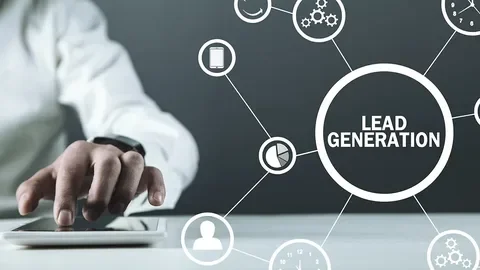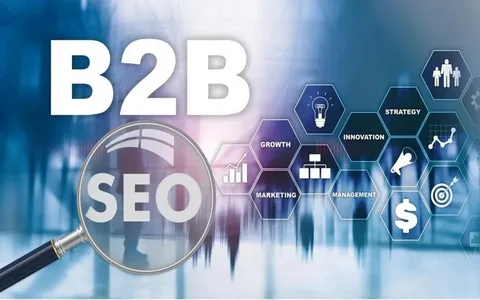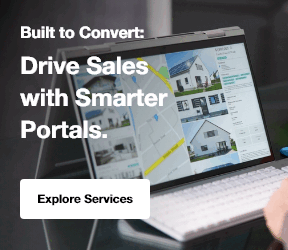B2B lead generation is a crucial first step in building a strong customer pipeline for businesses.
Unlike B2C, which targets individual consumers, B2B focuses on reaching out to other businesses, corporations, or organizations that need specific products or services to address challenges or enhance their operations.
The goal here is to identify prospects who genuinely want what your company offers.
That’s why the sales cycle tends to be longer compared to B2C, as more decision-makers across different departments or roles are involved in the process, each with their own priorities and concerns.
Given these factors, B2B lead generation requires a more strategic and personalized approach.
The process starts by identifying businesses that fit your ideal customer profile (ICP), which outlines the characteristics of the companies that would benefit most from your offerings.
Once you know who you're targeting, you can customize your B2B marketing approach and content to catch their attention.
Get Your Free Consultation Now!
What is B2B Lead Generation?
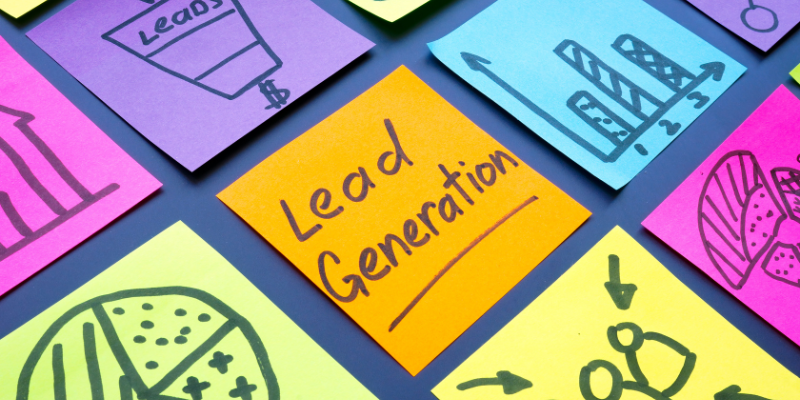
B2B lead generation is the process of identifying, attracting, and engaging potential business customers (other companies or organizations) who may be interested in your products or services.
Unlike what is B2C sales, which targets individual consumers making quick buying decisions, B2B focuses on more complex, high-value transactions that require input from multiple decision-makers.
Key points:
- Target audience: Businesses and organizations, not individual consumers.
- Goal: Convert prospects into qualified leads that can become paying customers.
- Methods: Inbound and outbound marketing
- Criteria: Leads are selected based on company size, industry, budget, and their readiness to purchase.
- Process: Nurture leads with tailored messaging until they’re ready for sales engagement.
Why It Matters in a B2B Context?
B2B lead generation plays a vital role in business growth, as it ensures that companies are able to attract high-quality prospects that are most likely to convert into loyal customers.
Since the B2B sales process often involves larger transactions, longer sales cycles, and multiple decision-makers, effective lead generation is essential for
1. Building a Consistent Sales Pipeline
B2B lead generation helps companies maintain a steady flow of qualified leads, ensuring that sales teams always have new prospects to engage with.
2. Maximizing ROI
With longer sales cycles and larger transaction values, B2B sales are a significant investment of time and resources. Lead generation helps ensure that these resources are spent effectively by targeting the right businesses and decision-makers, maximizing return on investment (ROI).
Understanding how does Shopify work and other platforms can also inform businesses on integrating lead funnels directly into their commerce stack.
3. Relationship Building
Unlike B2C, where purchases may be more transactional, B2B sales often involve building long-term relationships.
Lead generation is the first step in developing these relationships, where businesses can provide value through personalized content, educational resources, and solutions that address the prospect’s specific needs.
Incorporating digital marketing strategies into this phase can help deliver the right content at the right time, strengthening engagement.
4. Improving Sales Efficiency
By focusing on the right leads those who fit the ideal customer profile (ICP) B2B companies can improve sales efficiency.
Instead of casting a wide net, businesses can ensure that their marketing and sales efforts are directed at companies that are most likely to benefit from their offerings, leading to a higher conversion rate and reduced sales cycle time.
5. Targeted Marketing
B2B lead generation allows businesses to focus on specific industries, company sizes, geographic locations, or decision-makers within those organizations.
This targeted approach helps in crafting messages that resonate with the right audience, and platforms like LinkedIn marketing can be especially effective in reaching key decision-makers and increasing the likelihood of engagement and conversion.
Explore Our B2B Marketing Services!
Types of B2B Leads

In B2B lead generation, it is essential to categorize leads based on their level of engagement and readiness to purchase. This ensures that the marketing and sales teams focus their efforts on the right prospects at the right time.
Below are the main types of B2B leads
1. Marketing Qualified Leads (MQLs)
MQLs are leads who have engaged with your brand's marketing content or activities but are not yet ready to make a purchase.
These leads have shown interest, often by interacting with your content (e.g., downloading an eBook, subscribing to a newsletter, or attending a webinar), but they are still in the awareness or consideration stage of the buyer's journey. Similar to users trying to learn how to search for words on a page, MQLs are actively seeking solutions but not yet committed.
Here are a few characterstics of MQL:
- Engaged with your website, social media, or content (such as filling out forms, downloading resources, etc.)
- They have shown interest in your product or service but need more nurturing before becoming a sales-ready lead
- Typically, they require further education or nurturing through targeted email campaigns, content marketing, or follow-up activities
2. Sales Qualified Leads (SQLs)
SQLs are leads who have progressed beyond the awareness stage and have shown strong interest in making a purchase.
They are now considered "sales-ready" and are more likely to convert into paying customers. SQLs have met specific criteria, often through interactions such as direct inquiries, product demos, or requesting pricing details.
Here are a few characterstics of SQL:
- They have shown a higher level of intent, such as asking for a demo, requesting a proposal, or discussing pricing
- SQLs are typically further down the sales funnel and closer to making a purchase decision
- They may already fit the criteria for your ideal customer profile (ICP) and have the budget, authority, and need for your solution, similar to how decision-makers evaluate SEO audit pricing before investing in digital visibility services.
3. Product Qualified Leads (PQLs)
PQLs are leads who have already used your product or service (often through a free trial, freemium model, or product demo) and have shown interest in upgrading or purchasing.
PQLs are particularly common in SaaS (Software as a Service) businesses, where leads can experience the product firsthand before making a purchasing decision
Here are a few characterstics of PQL:
- They have used your product or service and experienced its value
- They have expressed interest in moving to a paid plan or purchasing additional features
- PQLs are typically high-quality leads because they already understand the value your product provides, much like clients who’ve experienced organic SEO services and are ready to upgrade to more comprehensive solutions.
4. Service Qualified Leads (SQLs)
Service Qualified Leads are leads who are interested in upgrading or purchasing additional services beyond the initial product offering.
These leads are typically existing customers who are satisfied with your product or service and are looking for more value, such as advanced features, additional services, or enterprise-level solutions.
Here are a few characterstics of SQL:
- They are already using your product or service
- They have shown an interest in additional services or premium features
- They are looking to expand their relationship with your company through upsells or cross-sells. Businesses often use SEO ranking report tools to identify such opportunities for account growth and performance tracking.
How is B2B Lead Generation Conducted?
B2B lead generation is carried out through a variety of strategic sales and marketing activities designed to attract, engage, and convert business prospects into qualified leads.
Here are the common methods used in B2B lead generation:
1. Sales
In sales, B2B lead generation is often referred to as B2B outbound, a proactive approach to reaching out to potential leads.
- Cold Calling: Sales Development Representatives (SDRs) reach out to B2B leads via telephone, presenting the benefits of their product or service and qualifying the lead for future engagement.Cold calling can be done manually or through automated systems to streamline the process.
- Outbound Email: SDRs use email to contact B2B sales leads, aiming to initiate a conversation and spark interest. This method is usually managed through email automation platforms that help streamline and track the outreach process.
- Social Selling: SDRs engage with potential leads on social media platforms, particularly LinkedIn, by following them, commenting on their posts, and building relationships over time. This method helps nurture connections and establish trust before directly pitching the product or service.
- Sales Cadences: A sales cadence is the combination of various techniques (cold calling, outbound email, social selling) used in a structured, timed manner to maximize the chances of a B2B lead responding. SDRs typically deploy these cadences to keep their outreach consistent and effective, increasing the likelihood of securing meetings or demos. Learning how to get into digital marketing is a foundational step for mastering these modern outreach techniques.
2. Marketing
For marketers, B2B lead generation is often referred to as demand generation, which involves attracting and nurturing leads through strategic marketing activities.
- Growth Hacking: This involves using unconventional, creative techniques to quickly generate demand and drive business growth. Examples include offering incentives, running contests, or providing free tools to engage potential leads and encourage sign-ups or purchases. Tactics like these are also considered the best lead generation for realtors, who rely on creative hooks to capture attention.
- Content Marketing: Marketers create and promote valuable, relevant content to attract their target audience. This can include blogs, videos, podcasts, webinars, and eBooks. The goal is to educate and engage leads, nurturing them through the early stages of the buyer's journey.
- Account-Based Marketing (ABM): ABM is a highly targeted marketing approach where marketers focus on specific companies (accounts) and identify key decision-makers. Customized campaigns are then created to engage and convert these individuals, ensuring a personalized experience tailored to their needs and pain points.
Explore Our Digital Marketing Services!
B2B Lead Generation Strategies
When exploring ways to generate B2B leads, businesses typically find that most strategies can be divided into two main categories:
1. Inbound Marketing
This strategy focuses on attracting leads who are actively seeking solutions and voluntarily contact companies.
Leads engage with content like social media posts, webinars, podcasts, or paid search ads, where understanding Google Ads cost is critical to managing campaign ROI and acquisition efficiency.
2. Outbound Marketing
This strategy involves the company proactively reaching out to potential leads through methods like emails, phone calls, or social media messages.
Outbound leads are generally of lower quality because they require more effort and time to qualify, and it’s harder to gauge their intent compared to inbound leads.
There’s no need to choose one approach over the other, a balanced combination of both inbound and outbound marketing is usually the best strategy, as it accommodates different stages of the customer journey.
When integrated with Performance Marketing efforts, outbound campaigns can become more data-driven and efficient in reaching the right prospects.
Techniques for Capturing B2B Leads
Effective lead capture methods are essential for turning visitors into prospects. These methods help collect contact information from potential leads and move them through the sales funnel.
Many companies enhance these efforts using tools such as gated content, contact forms, and chatbots especially when targeting specific niches like those searching for ecommerce SEO services, which often require tailored messaging to resonate with online retailers.
Below are some of the most commonly used lead capture methods
1. Contact Forms
Contact forms on your website allow visitors to easily provide their information, such as name, email, and company details. Make sure your forms are indexable unless you intentionally apply noindex for privacy or testing purposes.
2. Landing Pages
Landing pages are standalone web pages designed specifically to capture lead information. They typically offer a focused call-to-action (CTA), such as downloading an eBook, signing up for a newsletter, or requesting a demo.
3. Lead Magnets (eBooks, Checklists)
Lead magnets are valuable resources that you offer in exchange for a visitor's contact information.
Examples include eBooks, whitepapers, case studies, or checklists that solve a specific problem for your target audience.
4. Chatbots / Live Chat
Chatbots and live chat features allow businesses to engage visitors in real-time, answering questions, providing information, and guiding them toward conversion, much like how users often search how to turn off Meta AI for more control over interactions.
5. Webinars & Event Registrations
Hosting webinars and events provides valuable content to your target audience while also capturing leads.
KPIs to Measure B2B Lead Generation
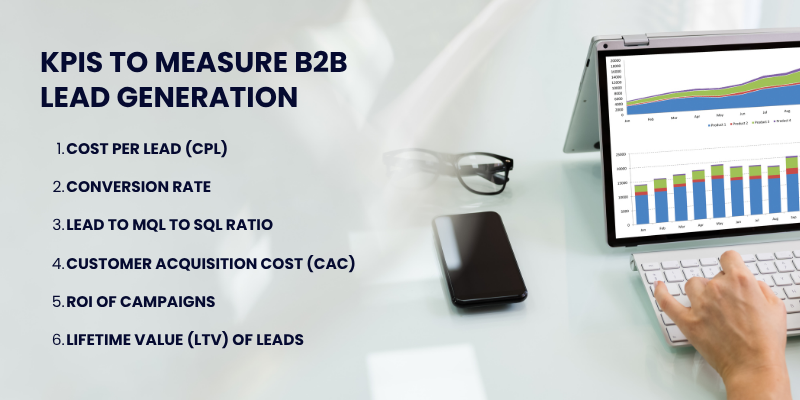
To assess the effectiveness of B2B lead generation efforts, businesses rely on various key performance indicators (KPIs) that provide insights into the efficiency and success of their strategies.
Below are some of the most important KPIs to track
1. Cost per Lead (CPL)
CPL measures the total cost incurred to acquire a single lead.
This KPI helps businesses understand the efficiency of their lead generation efforts by comparing the cost of various campaigns and channels.
2. Conversion Rate
Conversion rate tracks the percentage of leads that take a desired action, such as filling out a contact form, signing up for a demo, or making a purchase.
3. Lead to MQL to SQL Ratio
This metric measures the flow of leads from initial contact to becoming Marketing Qualified Leads (MQLs) and then Sales Qualified Leads (SQLs), similar to tracking Google keyword ranking through the SEO funnel.
4. Customer Acquisition Cost (CAC)
CAC calculates the total cost of acquiring a customer, including marketing expenses, sales costs, and other related expenditures.
5. ROI of Campaigns
Return on Investment (ROI) measures the profitability of lead generation campaigns by comparing the revenue generated from acquired leads to the cost of the campaigns.
High ROI suggests that your lead generation strategies are yielding significant returns, while low ROI may indicate the need for optimization.
6. Lifetime Value (LTV) of Leads
LTV calculates the total revenue a business can expect to generate from a lead over the entire duration of the relationship.
Challenges in B2B Lead Generation
B2B lead generation faces various challenges, even with advanced tools.
These challenges can hinder the process of converting prospects into customers and impact the overall effectiveness of marketing and sales efforts.
Understanding what is the digital marketing strategy that tracks users across the web? can help marketers address some of these obstacles by enabling more targeted and behavior-based nurturing campaigns.
- Finding High-Quality Leads: Low-quality leads can clog sales pipelines and waste resources.
- Poor Data Quality: Inaccurate or outdated lead information undermines outreach efforts.
- Sales and Marketing Misalignment: Misaligned teams lead to inconsistent messaging and a fragmented customer experience.
- Ineffective Lead Nurturing: Disconnected approaches to nurturing leads can slow down conversions.
Final Thoughts: Future of B2B Lead Generation
The future of B2B lead generation is shifting towards quality over quantity. Instead of focusing on generating as many leads as possible, businesses are prioritizing high-intent, well-qualified leads that offer greater long-term value.
This change responds to today’s buyers, who are more informed, selective, and expect transparency and trust from their partners. Customers now demand personalized solutions tailored to their specific challenges.
To meet these demands, B2B platforms are evolving into intelligent matchmaking systems. Verified profiles ensure credibility, while AI tools analyze behavioral data to connect buyers and sellers.
Built-in analytics help refine targeting and provide more personalized engagement, moving beyond basic product listings to foster high-value connections.
